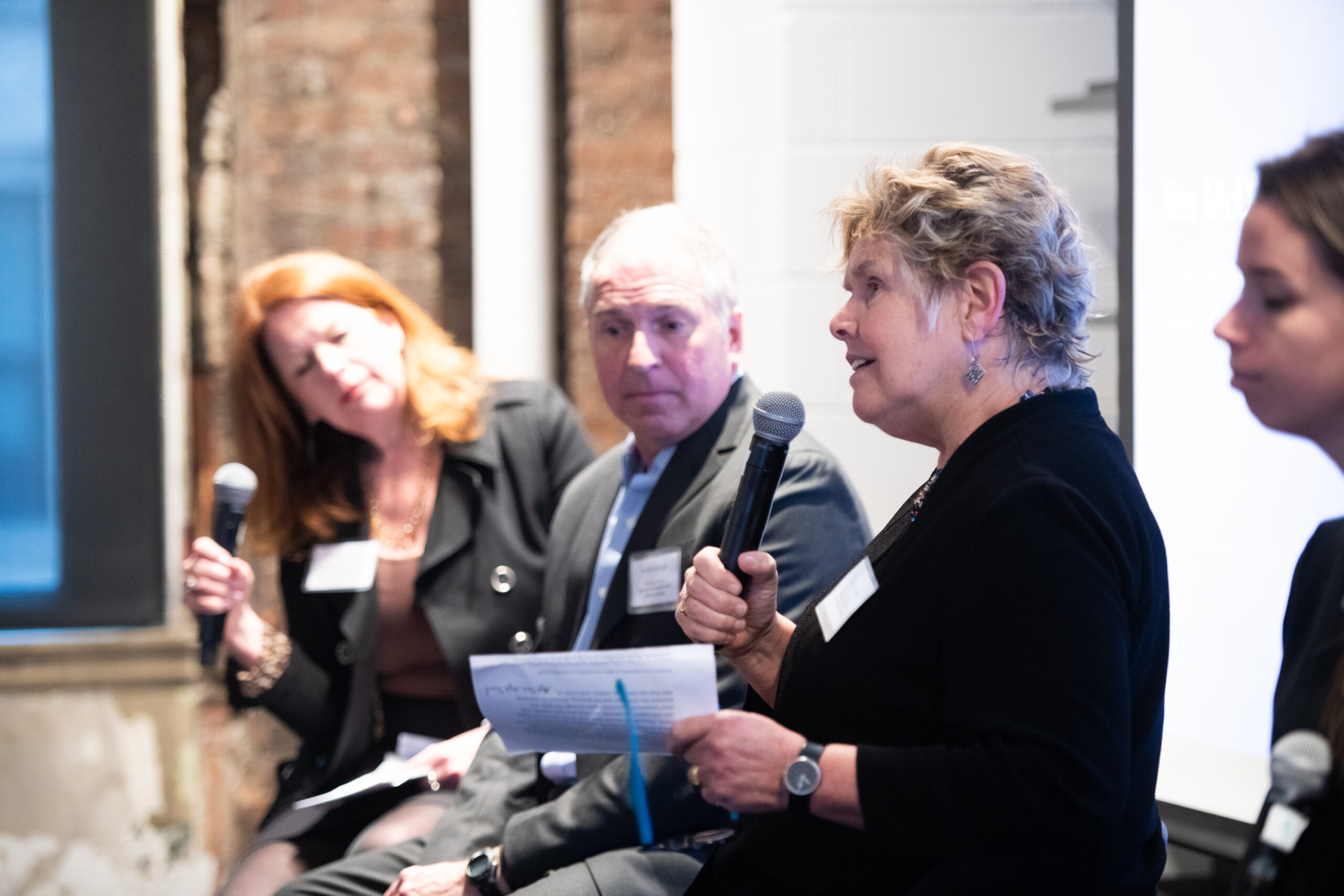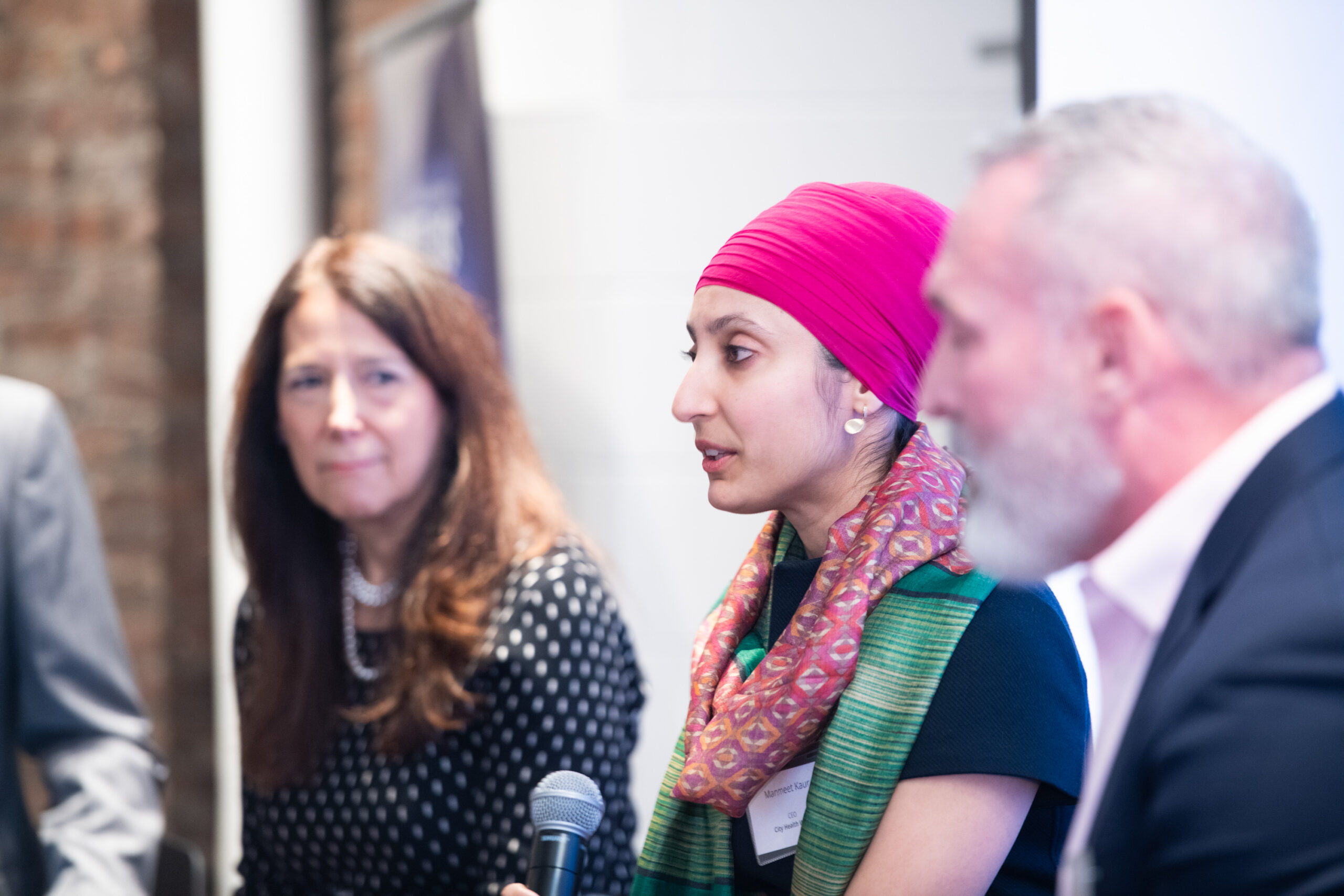
Cross-Sector Collaboration: Fostering Meaningful Community Relationships
Ally Pratt
At our inaugural Summit, One Continuum, we hosted an interactive session where leaders across healthcare, the community, government, and philanthropy all discussed best practices in their unique journeys to care coordination.We loved being able to hear the range of approaches that our attendees are using and want to reiterate that our end goal is one and the same: to build healthier communities together.
Here is phase one.
Where can I start?
You need to foster meaningful relationships across your community.
1. How will you gather stakeholders from across the continuum in the same room to kickstart this collaboration?
We know that in order to effectively coordinate care, we must listen to voices from across the continuum – especially the ones that aren’t always heard. You need to find the right voices and then find the right way to convene. At One Continuum, Theresa Reno-Weber, President of Metro United Way, talked about the need to move beyond individual relationships between health systems and nonprofits and think large scale. She said:
“We really have to be pushing the conversation and I think that only happens when there’s strength in numbers… when you can get to a place where you’re able to really show that it can be at a population level that we can start to change outcomes and start to change the way we work and the way the system works – because it’s not working the way it is right now.”
She pointed to a need for widespread care collaboration and continued, “We’ve really got to have something radically different and disruptive to be able to get to this new space. Individual nonprofits I don’t think are going to be able to move that ship on their own, but when we come together as a collective voice, we’re so much more likely to actually make that change.”
Establishing relationships with existing organizations in the community, such as 2-1-1s, is important to consider during the planning stage because they can introduce social care organizations to healthcare organizations. It’s important to foster these relationships with local leaders early on so that everyone can get involved with planning. These conversations may even elucidate subtleties in your community that you may not have noticed before.

2. What degree of visibility do partners currently have into shared clients’ progress?
We know that visibility is a critical part of accountability. We also know that there are numerous barriers to visibility: a lack of resources, a lack of technical interoperability, strict privacy standards… the list goes on. At One Continuum, Kathryn Salisbury, Executive Vice President of Vibrant Emotional Health, touched on the need to incentivize cross-organizational collaboration in order to prove true outcomes and said,
“I think that we really have to think very comprehensively about everybody who is a partner in working toward health for an individual, and in order to build that trust, we have to have contact with each other in the form of visibility into what one another is doing.”
She elaborated on the importance of being able to follow individuals’ entire health journeys and said she can’t always do so. “We don’t have visibility into what happens to [people] after they reach the referral source that we send them to. In follow-up, we may learn whether or not they got there, but we don’t know whether they went back there, we don’t know what happens when they receive the services.” She discussed how not being able to track outcomes is an issue for her organization as well as for their funders and partners. Understanding the landscape of visibility – or invisibility – amongst partners in your community is a good step toward assessing which gaps to fill first.
3. Have you identified opportunities for more holistic care in your community?
In the early stages of planning to coordinate care, you’ve likely bumped into a few roadblocks or noticed potential service gaps in your community. Is there a high demand for housing in certain areas or maybe a need for improved public transportation? What vulnerable populations might be present? If you have insight into these high-level opportunities for improvement, it may be easier to connect with partners with similar missions. Chances are, several organizations are already working toward the same goals in your community, but aren’t coordinating their efforts.
When it comes to whole-person care, you need to consider the complexities of human needs. What trends in outcomes can you pinpoint? Do you have the data to back them up? Zach Hennessey, Vice President of Public Health Solutions (who announced a partnership with Unite Us in October), emphasized the importance of early childhood investment. He says:
“From a public health perspective, we are very focused on the lifespan perspective and that there are key moments in a lifespan where you can invest and that will save a tremendous amount both in terms of health and social welfare in the future.”
His organization focuses on a wide variety of public health issues while conducting targeted research in communities to improve their programs and advance knowledge on health and healthcare. By empowering community-based organizations and leveraging public-private partnerships with government agencies, Public Health Solutions has exercised a comprehensive approach to combatting health disparities in New York City. Zach agreed with other panelists that doing an early analysis of the service landscape can be very helpful. He said, “Care management is wonderful; we find care management can really help – especially when you’re dealing with the diversity of New York City – to help people gain access to services and to get the most out of those services where those services are available, but in certain areas, like behavioral health, we have real capacity challenges and all the care management in the world will not help a person where a service is not available.” Learn about your community… and look beyond the scope of your organization.

4. What standards do you expect for quality and speed of care?
When it comes to coordinating care, partners should establish shared goals. To do this, you should determine a standard set of metrics to track. As said by Sarita Mohanty, VP of National Medicaid and Care Coordination at Kaiser Permanente, “We have really developed an integrated system within [Kaiser Permanente], but what we are now seeking to achieve is: how do we integrate with systems outside of our four walls?”Kaiser Permanentehas delivered high-quality care and coverage to their patients for over 60 years. She continued, “We really feel like we provide what we believe is excellent clinical care – we have protocols, design, approaches, IT – but we’ve got to do the same when we’re delivering social care.”
Depending on where you lie along the continuum, your quality measures likely differ to a degree from other organizations that your clients interact with. Translating these standards across sectors may be challenging, but is worth considering. In order to ensure quality care throughout your community, you should be able to count on partner organizations, and vice versa. As put simply by David Caress, Northwest Director at Unite Us: “Have open lines of communication with community partners and remember that trust comes from working through struggles together. Sometimes to build trust you need to reveal weaknesses.” Establish your standards internally first, then work with your partners to find what works best collectively.
5. What’ll be required from each partner to achieve your goals?
Similar to establishing shared goals and standards, you should start thinking about the specific role that each partner plays in the timelines of the individuals that you’re serving. At One Continuum, Manmeet Kaur, CEO of City Health Works whojust made Crain’s 40 Under 40 List, spoke about the responsibility of clarifying who your organization serves. She said:
“It’s really important for providers to be really specific about which population they’re solving for, and which solution, because there’s obviously an enormous recognition – this room is a testament to that – that there’s validity around this concept [of one continuum], but there’s a need for rigor but also clarity around which population [you serve] and which population you do not serve.”
It’s important to be specific about the scope of your organization before you expect others to collaborate with you. Level set so that you can find the right partners and, together, cover the whole care continuum. In order to help individuals seeking care, we need to understand the system ourselves; this means being transparent about your strengths, weaknesses, and coverage areas.

This is a complex problem, but collective impact can move the needle on outcomes. Let’s join forces in this movement. (Stay tuned for phase two!)
What ways have you positioned yourself as a leader in care coordination in your community?
About Unite Us
Unite Us is the nation’s leading software company bringing sectors together to improve the health and well-being of communities. We drive the collaboration to identify, deliver, and pay for services that impact whole-person health. Through Unite Us’ national network and software, community-based organizations, government agencies, and healthcare organizations are all connected to better collaborate to meet the needs of the individuals in their communities.



